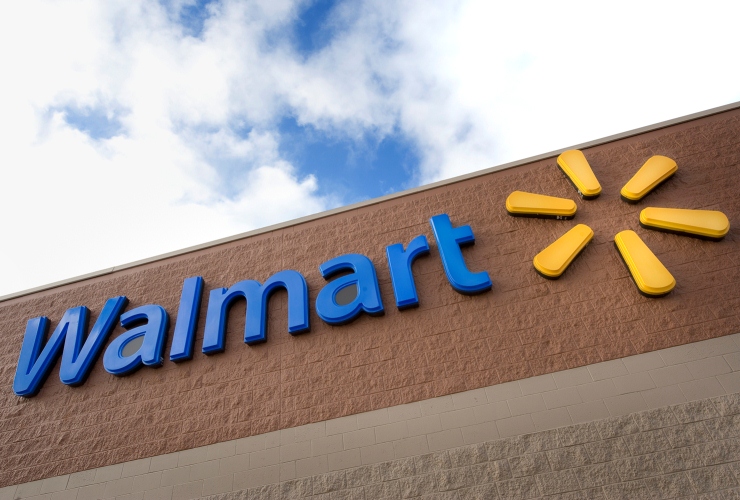Walmart is the largest American employer, with a workforce of nearly 2.2 million people. However, because of its international reach, only 1.3 million of those were employed in the United States.
Each of America’s 10 largest employers has a workforce of more than 300,000 people. Some of the companies, such as Walmart and McDonald’s, offer mostly low-wage jobs. Others, such as IBM and General Electric, are leading technological innovators and their workforces are more highly skilled and better compensated. 24/7 Wall St. reviewed the 10 American companies that, combined, employed more than 5.6 million workers.
Click here to see which companies are the largest employers
Several of the nation’s largest employers are retailers. Most famously, Wal-Mart Stores, which owns Walmart and Sam’s Club, employs roughly 2.2 million people worldwide and is the largest private employer in the United States. Target and Kroger are also among America’s largest employers and may still add to their workforces. Target recently has begun expanding into Canada, while Kroger recently purchased rival Harris Teeter.
Like large retailers, fast-food chains also require plenty of low-skilled labor in order to operate their stores and expand. The successful launch of the Doritos Locos taco at Yum! Brands’ Taco Bell led the company to estimate it had added 15,000 jobs. McDonald’s has employed a large number of low-skilled workers for so long that such jobs are often derided as “McJobs” for their low pay and limited career opportunities.
But not all of America’s largest employers have a low-skilled workforce. Technology companies such as IBM and Hewlett-Packard conduct research and offer a wide range of products and services, requiring them to hire high-skilled workers. IBM has been the nation’s leader in patent approvals for the past 20 years, likely due to both the size and talent of its workforce.
Conglomerates such as General Electric also employ hundreds of thousands of workers. When GE recently announced its plans to expand its software capabilities, it also stated it would be hiring thousands of engineers.
Several of the nation’s largest employers have developed reputations for being unfriendly toward unions. In 2011, when it appeared a Target store in Valley Stream, New York, might unionize, the company voiced its opposition to unions. Around that time, a company-produced video emerged, warning employees about joining unions. By contrast, Kroger and UPS have largely unionized workforces.
Based on a screening of S&P 500 companies, 24/7 Wall St. determined the 10 largest employers based on the total number of full-time and part-time workers at the end of each company’s most-recent fiscal year. Year-over-year changes in stock price are as of August 20, 2013.
These are America’s largest employers.
10. General Electric
> Total employees: 305,000
> Industry: Conglomerate
> 1-yr. stock price change: +13.0%
General Electric Co. (NYSE: GE) is one of the few U.S.-based public companies that employed more than 300,000 full and part-time workers. Of these employees, the company noted, roughly 134,000 worked in the United States. If not for its shedding of NBC Universal, these figures would have been higher. GE’s former subsidiary, now owned by Comcast, had 14,000 employees as of 2010. GE has long been a major source of technological innovation, from incandescent lighting to the refrigerator and the jet engine. The company is pushing heavily into software and plans to hire thousands of engineers to improve the software capabilities of its machinery.
Also Read: Famous Products Invented for the Military
9. Hewlett-Packard
> Total employees: 331,800
> Industry: Technology
> 1-yr. stock price change: +32.4%
Hewlett-Packard Co. (NYSE: HPQ) had 331,800 workers worldwide as of last October. The company, however, is in the midst of massive job cuts. In May 2012, HP announced it would cut 29,000 employees by fiscal 2014, both through voluntary retirement and job cuts. As of March, the company still had 15,000 more jobs that needed to be cut to reach these goals, according to ComputerWorld. In late 2012, the company also wrote down its Autonomy acquisition by $8.8 billion after it was determined Autonomy had lied about its finances.
8. Home Depot
> Total employees: 340,000
> Industry: Home improvement
> 1-yr. stock price change: +31.0%
As of February, Home Depot Inc. (NYSE: HD) employed roughly 340,000 people. Of these, however, just 21,000 were salaried, with the vast majority working either hourly or only on a temporary basis. The company is active throughout North America, but it is mostly located in the United States. The home improvement retailer had just under 2,000 stores in the U.S., 180 in Canada and 100 in Mexico. After his appointment in 2007, current CEO Frank Blake removed previous pay limits so the company could hire knowledgeable specialists. He also improved employee benefits as part of his efforts to produce better customer service.
7. Kroger
> Total employees: 343,000
> Industry: Grocery stores
> 1-yr. stock price change: +71.5%
Kroger Co. (NYSE: KR) employed roughly 343,000 full-time and part-time workers as of February. The majority of Kroger employees “are covered by collective bargaining agreements negotiated with local unions affiliated with one of several different international unions,” according to the company. The company’s track record of working with unions has earned it accolades over the years. In 2011, it acquired several Schnucks grocery stores in the Memphis area. One local official noted, “Kroger is a very good, pro-labor, pro-union chain, … if it has to be bought up by somebody, I’m glad its them.” In July, Kroger announced it was buying supermarket chain Harris Teeter, although its new acquisition is expected to stay union-free.
6. Target
> Total employees: 361,000
> Industry: Retail
> 1-yr. stock price change: +5.9%
Target Corp. (NYSE: TGT) employed 361,000 full-time, part-time and seasonal, workers as of February 2013. Like many retailers, however, Target’s hiring swells during the holiday season. Between Thanksgiving and the end of the year, Target had approximately 409,000 workers. Most, if not nearly all, of these workers were likely employed in the United States. Target has no presence outside of the U.S. and Canada, and it only began operating stores in Canada in March 2013. Target has been criticized in recent years for its opposition to unions. In June 2011, one executive told The Wall Street Journal that “it has always been our goal to have a culture where our team members don’t want or need union representation.” Earlier that month, Gawker Media had released an internal video, apparently shown to new Target employees, that discouraged them from joining unions.
5. United Parcel Service
> Total employees: 399,000
> Industry: Delivery and freight
> 1-yr. stock price change: +12.9%
United Parcel Service Inc. (NYSE: UPS) had about 323,000 employees in the United States alone at the end of 2012, not including any seasonal hires. The majority of these workers were employed through contracts the company has with the Teamsters and other unions. The company agreed to a new, five-year national master agreement with the Teamsters, which went into effect August 1. The new contract guarantees rising salaries over the life of the deal, as well as the addition of new full-time jobs. Much of the company’s workforce, however, is still employed only part time. At the end of last year, 46% of the company’s 328,000 hourly employees, as well as 36% of management personnel, were employed part time.
4. IBM
> Total employees: 434,246
> Industry: Technology
> 1-yr. stock price change: -8.3%
International Business Machines Corp (NYSE: IBM) employed more than 434,000 individuals at the end of 2012. The company has one of the nation’s highest-skilled workforces. For 20 straight years, the company has received more patents from the U.S. Patent Office than any other business, with nearly 6,500 awarded in 2012 alone. Additionally, five IBM employees have won a Nobel Prize. But despite the company’s research accomplishments, IBM is still sensitive to its bottom line. Earlier this year the company cut more than 3,300 jobs in the United States. and Canada. In August, with falling demand for new servers, the company announced it would have to furlough much of its U.S. hardware team for a week to cut costs.
Also Read: Nine Cities Running Out of Water
3. McDonald’s
> Total employees: 440,000
> Industry: Fast food
> 1-yr. stock price change: +9.3%
McDonald’s Corp. (NYSE: MCD) had a total of 440,000 employees at the end of 2012. In recent decades, fairly or not, McDonald’s has become associated with poor quality jobs, known as “McJobs.” Merriam-Webster defines a McJob as “a low-paying job that requires little skill and provides little opportunity for advancement.” McDonald’s has been in the news recently for offering a budget calculator that employees can use to balance their income and expenses. The company provided a sample monthly budget that makes unrealistic assumptions such as employees working two jobs, paying just $600 per month in rent and somehow finding health care insurance that costs just $20 per month. In 2011, a McDonald’s recruiting drive led to 62,000 new jobs.
2. Yum! Brands
> Total employees: 523,000
> Industry: Fast food
> 1-yr. stock price change: +9.9%
Yum! Brands Inc. (NYSE: YUM) — owner of KFC, Taco Bell and Pizza Hut — had more than half a million employees at the end of 2012. The vast majority of its workforce were hourly workers. Although the company does not break out its employee counts by country, many of its employees are based abroad. At the end of last year, less than half of the Yum! Brand stores, franchised or company-owned, were located in the United States. Additionally, 4,547 of the 7,578 company-owned locations were in China, where KFC is the largest fast-food chain. The company’s success in the U.S. is still a major driver of job growth. Taco Bell has added 15,000 jobs due to the success of its Doritos Locos taco.
Also Read: States Profiting the Most from Sin
1. Walmart
> Total employees: 2.2 million
> Industry: Retail
> 1-yr. stock price change: +1.7%
At the end of the 2013 fiscal year, Wal-Mart Stores Inc. (NYSE: WMT) employed nearly 2.2 million employees around the globe. Of these, more than 1.3 million worked in the United States, meaning the retail giant’s U.S. workforce is larger than the global workforce of any other American business. Walmart de México y Centroamérica, which is the largest private employer in Mexico, had nearly a quarter of a million employees in Central America as of April. Recently, the Washington, D.C., city council passed a bill requiring large retailers to pay their workers at least $12.50 an hour (well above the city’s minimum wage). This has reignited the debate over whether Walmart provides an adequate wage for its workers.
Take Charge of Your Retirement: Find the Right Financial Advisor For You in Minutes (Sponsor)
Retirement planning doesn’t have to feel overwhelming. The key is finding professional guidance—and we’ve made it easier than ever for you to connect with the right financial advisor for your unique needs.
Here’s how it works:
1️ Answer a Few Simple Questions
Tell us a bit about your goals and preferences—it only takes a few minutes!
2️ Get Your Top Advisor Matches
This tool matches you with qualified advisors who specialize in helping people like you achieve financial success.
3️ Choose Your Best Fit
Review their profiles, schedule an introductory meeting, and select the advisor who feels right for you.
Why wait? Start building the retirement you’ve always dreamed of. Click here to get started today!
Thank you for reading! Have some feedback for us?
Contact the 24/7 Wall St. editorial team.




